The eastward expansion of the European Union (EU), particularly in the post-Cold War era, has been one of the most significant processes in European geopolitics. It involved the integration of several Central and Eastern European countries into the EU, a process that began in the 1990s and culminated in several waves of enlargement, with the most recent being the 2007 and 2013 rounds, which brought in countries such as Romania, Bulgaria, and Croatia. However, while the EU’s expansion into Eastern Europe has been hailed as a success in terms of promoting stability, democracy, and economic growth, it has also presented several challenges and issues, both for the new member states and for the EU itself.
I. Political and Institutional Challenges
- Democratic and Institutional Reforms:
- One of the key conditions for Eastern European countries to join the EU was the need to implement democratic reforms and strengthen institutions. Countries transitioning from authoritarian regimes or centrally planned economies had to overhaul their political systems to meet the EU’s Copenhagen criteria, which include respect for democracy, the rule of law, human rights, and protection of minorities.
- However, the process of political transformation was not uniform across all countries. In some cases, countries such as Poland and Hungary struggled with the implementation of democratic reforms, and there have been backsliding trends in terms of judicial independence, freedom of the press, and democratic checks and balances. These developments have raised concerns about the EU’s ability to enforce its values among its eastern members.
- Institutional Overload:
- The eastward enlargement placed additional pressure on EU institutions, which were already dealing with the integration of member states with diverse political and economic systems. The European Commission, the European Parliament, and the European Council faced challenges in terms of balancing the interests of new members with those of older member states.
- The integration of Eastern European countries increased the EU’s decision-making complexity due to the larger number of members. The need to accommodate the differing political, economic, and social systems in the EU’s policy-making and governance processes led to concerns about institutional efficiency. The Treaty of Nice (2001) and later the Lisbon Treaty (2007) were attempts to address the institutional challenges posed by enlargement, such as voting rights in the European Council and representation in the European Parliament.
- Nationalism and Sovereignty Issues:
- In some of the new member states, the process of joining the EU raised issues concerning national sovereignty and the extent to which national governments were willing to cede control to supranational institutions. While the majority of the population in these countries supported EU membership, nationalist political forces in countries like Hungary and Poland have challenged EU authority, particularly on issues related to the rule of law, judicial independence, and media freedom.
- The rise of populist and anti-EU movements in the East, coupled with economic inequalities between older and newer EU members, has made it harder to achieve full political cohesion within the EU. Countries that have historically had strong national identities have been reluctant to fully embrace EU policies in areas such as migration, internal governance, and foreign policy.
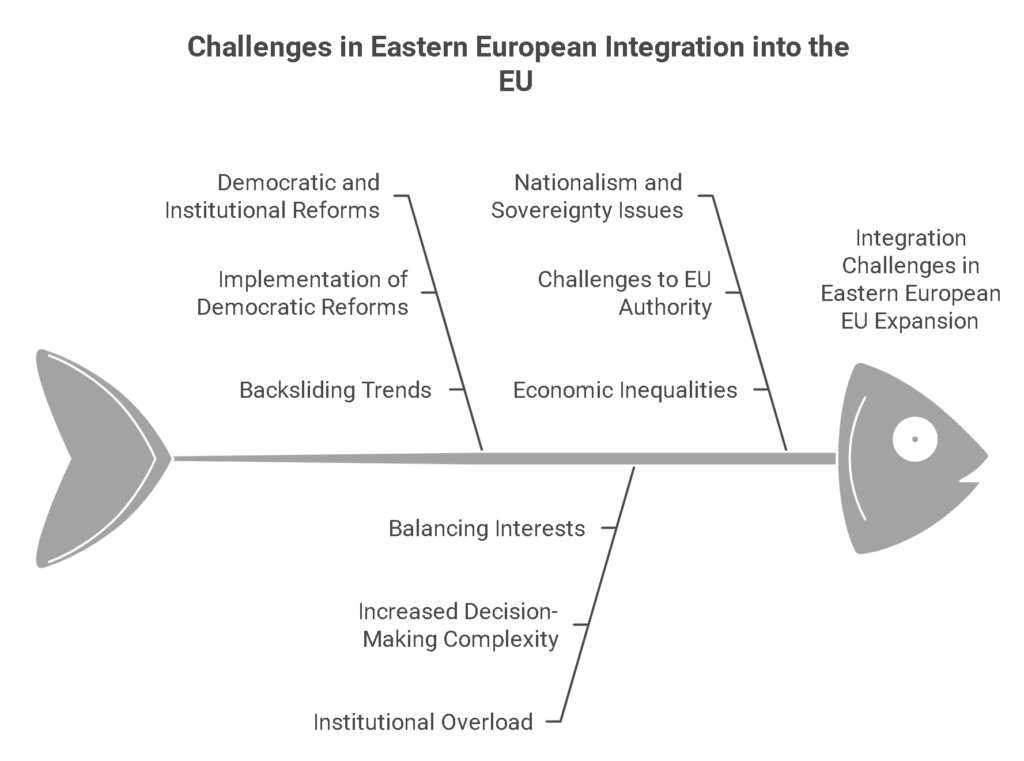
II. Economic and Structural Issues
- Economic Disparities:
- One of the most prominent issues related to the eastward expansion is the significant economic disparity between the EU’s established Western economies and the newer Eastern European member states. While the latter have made substantial progress in terms of economic growth, they still face considerable challenges, such as lower income levels, higher unemployment, and weaker infrastructure.
- The accession process required Eastern European countries to align their economies with the EU’s single market, which included adopting EU standards, regulations, and laws. However, many of these countries still struggle with issues such as poverty, regional disparities, and the need for further investment in infrastructure and public services to bring their economies up to the EU’s standards.
- EU Funding and Cohesion Policy:
- To address the economic imbalances, the EU has implemented the Cohesion Fund and Structural Funds, which are designed to promote economic convergence among regions within the EU. However, the distribution of EU funds has not always been straightforward. The Eastern European countries, despite receiving substantial funding, have faced challenges in effectively using EU funds due to issues such as corruption, bureaucratic inefficiency, and lack of administrative capacity.
- There are also ongoing tensions between the newer Eastern European countries, which rely heavily on EU funding, and older EU member states that have to contribute to the funding pool. As the EU faces economic challenges, there has been growing debate over whether funds should be allocated to poorer regions in the East or used to support the EU’s southern and western economies, which have also faced financial crises.
- Labor Mobility and Migration:
- Following the eastward enlargement, there was a significant migration of workers from Eastern European countries to wealthier EU member states in the West. Countries such as the UK, Germany, and Ireland saw a large influx of workers from the East, seeking better employment opportunities. While this migration provided economic benefits to both the host and source countries, it also led to socio-political tensions within EU member states.
- Some EU countries, particularly in Western Europe, expressed concerns about the potential social impact of the large influx of workers, while Eastern European countries faced challenges related to the brain drain, where their skilled workforce migrated westward, potentially hindering their own economic development.
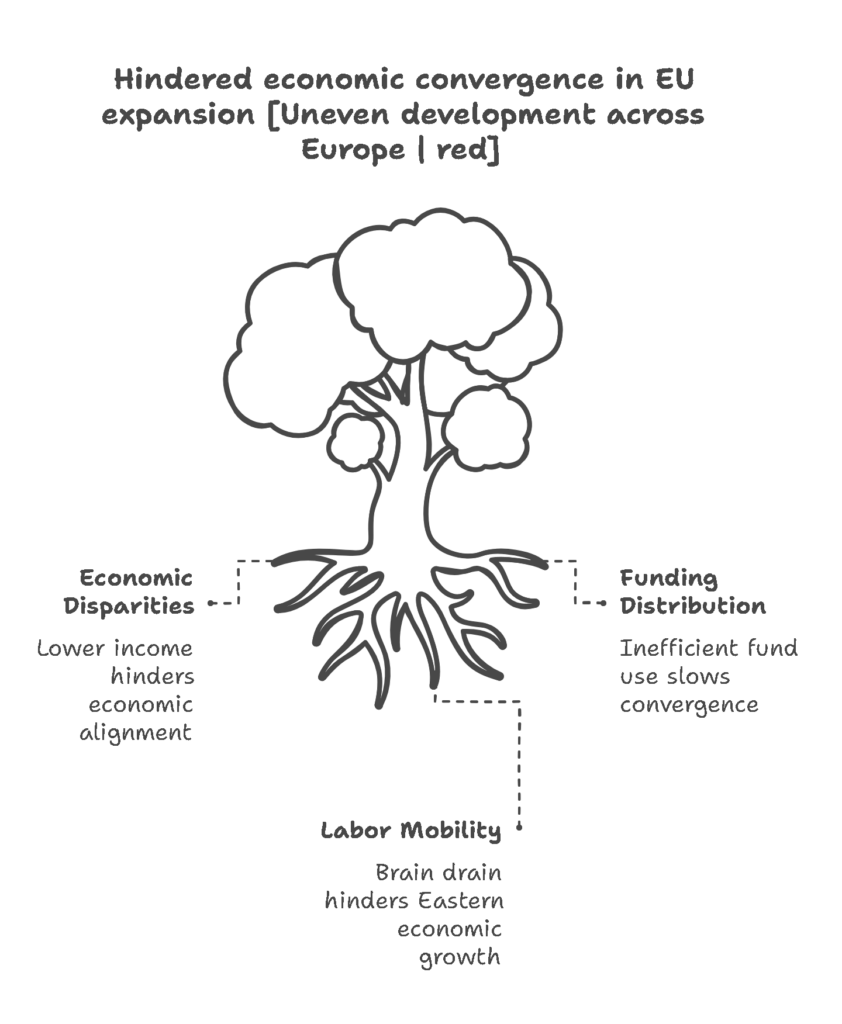
III. Social and Cultural Issues
- Cultural Integration and Identity:
- Cultural integration remains a sensitive issue in the Eastward enlargement process. There are significant cultural and historical differences between Eastern and Western Europe, which are rooted in centuries of divergent political systems, traditions, and ideologies. These differences have occasionally led to challenges in social cohesion within the EU.
- Additionally, the influx of Eastern European migrants into Western European countries has raised concerns about cultural integration, especially in areas such as language barriers, religious differences, and social integration. In some EU countries, particularly those with more established national identities, there has been resistance to the perceived influx of foreign cultures.
- Minority Rights and Protection:
- The eastward enlargement also brought to the forefront issues concerning the protection of minorities, particularly the Roma community, which faces widespread discrimination in several Eastern European countries. The EU has been instrumental in promoting the rights of minorities and addressing discrimination within its borders. However, the effectiveness of the EU’s policies in ensuring the protection of these vulnerable groups remains a topic of debate.
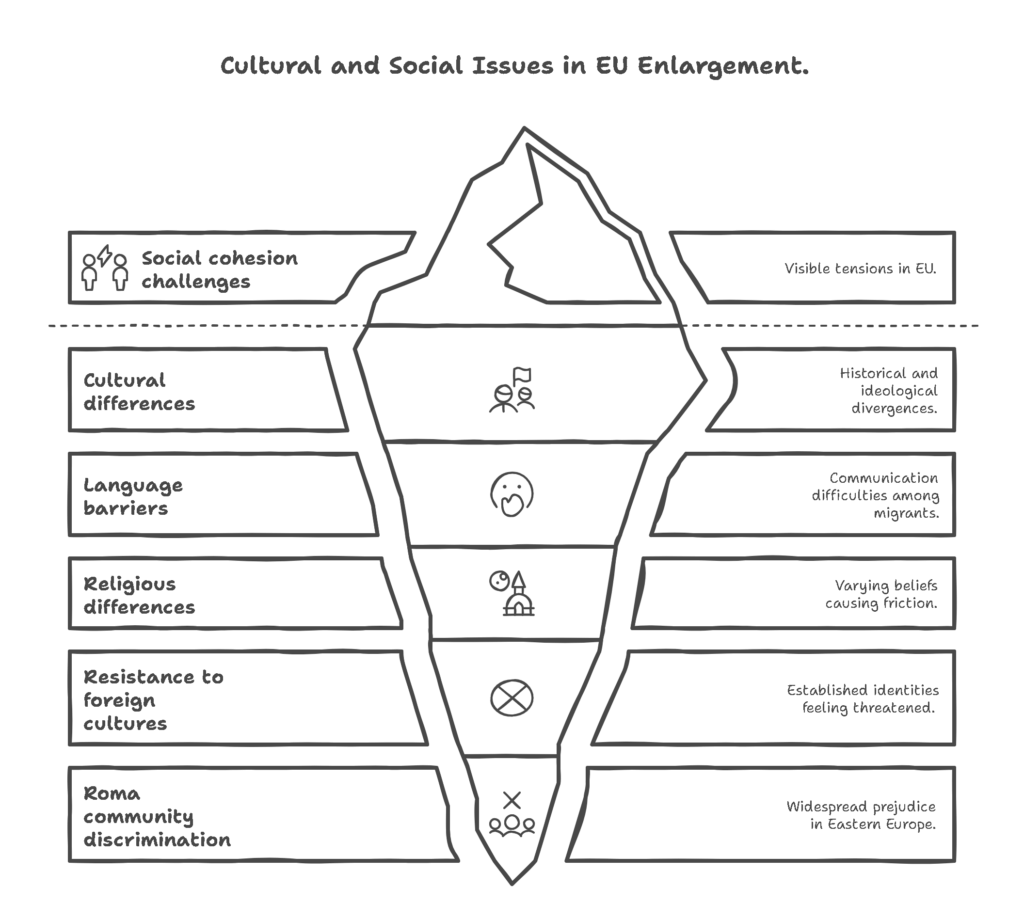
IV. Geopolitical Issues and External Relations
- Relationship with Russia:
- One of the most significant geopolitical issues surrounding the eastward expansion of the EU has been the relationship with Russia. Russia has consistently opposed the enlargement of the EU and NATO towards its borders, viewing it as a strategic threat to its sphere of influence. The EU’s eastward enlargement, particularly the inclusion of former Soviet republics such as the Baltic States, has strained EU-Russia relations.
- The EU’s policy towards Russia has been one of engagement mixed with caution, balancing economic ties with geopolitical concerns. The annexation of Crimea by Russia in 2014 and the ongoing conflict in Ukraine have further complicated the EU’s relationship with Russia, making it difficult for the EU to have a cohesive and uniform approach towards its Eastern neighbors.
- Security and Border Control:
- As new Eastern European states joined the EU, issues surrounding border control, security cooperation, and the potential for regional conflicts became more prominent. The EU has had to integrate countries with different security concerns and military capabilities, making it essential to foster internal cohesion while addressing external security threats, such as the situation in Ukraine and other parts of the Eastern Neighborhood.
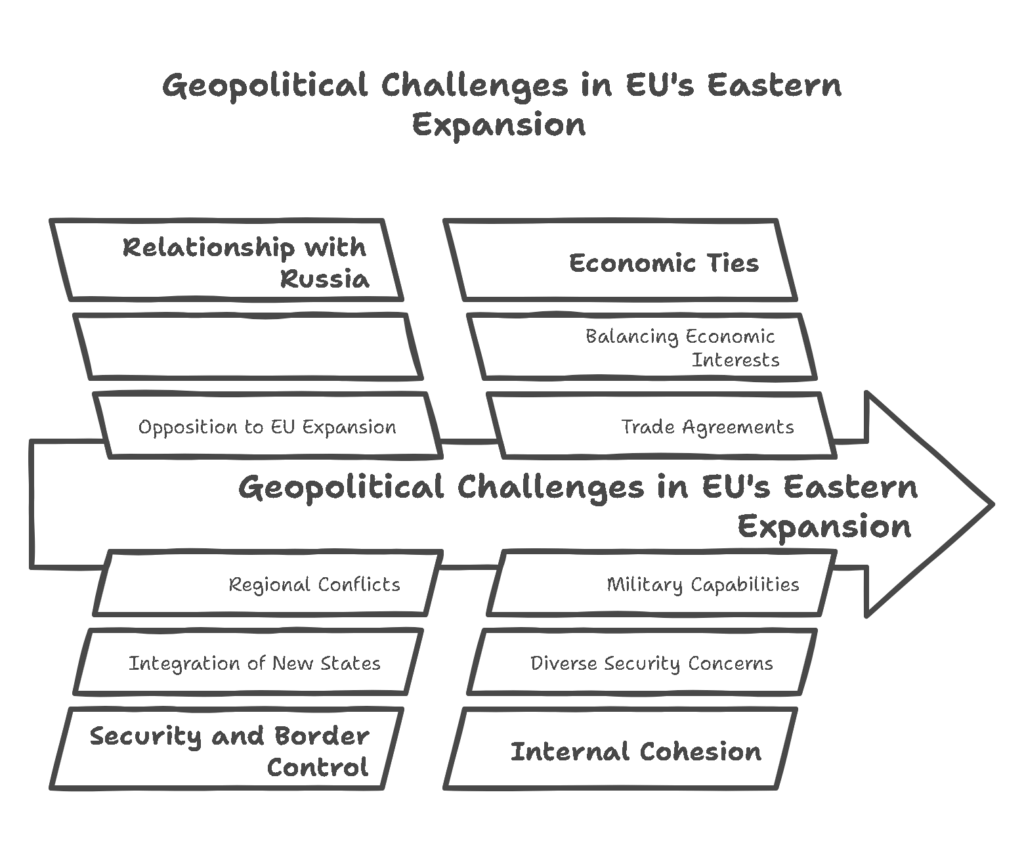
V. Conclusion
The eastward expansion of the European Union has been a transformative and ambitious project that has reshaped the political, economic, and social landscape of Europe. While it has brought significant benefits, such as promoting stability, democratization, and economic growth in Eastern Europe, it has also introduced a range of issues and challenges. These include political and institutional adjustments, economic disparities, labor mobility, cultural integration, and external geopolitical tensions. The future of the EU’s eastward expansion will depend on its ability to address these challenges while maintaining unity and promoting the values of democracy, human rights, and prosperity for all its member states.
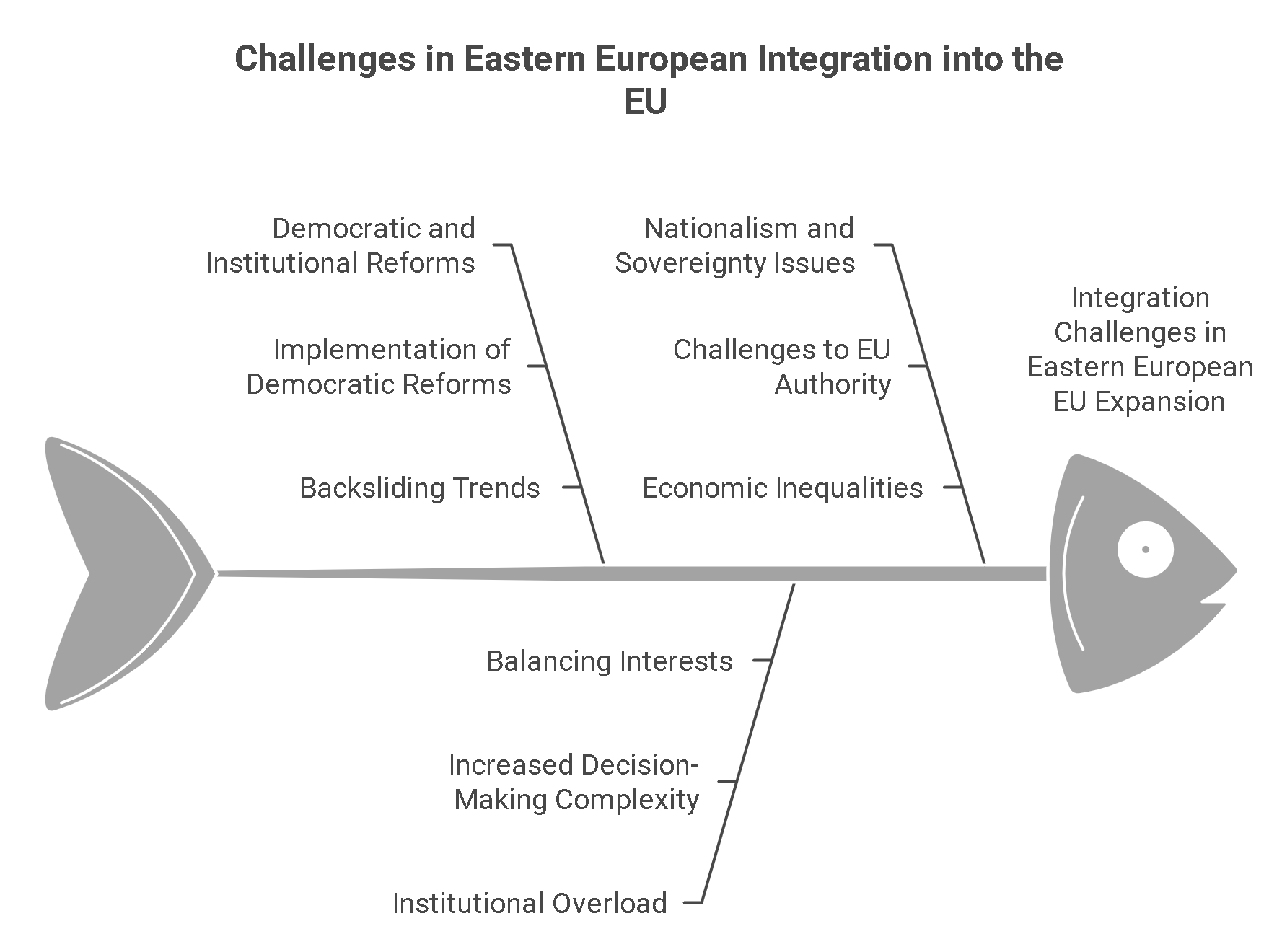


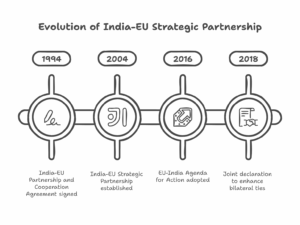
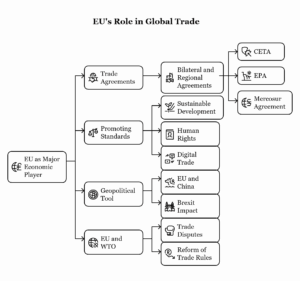

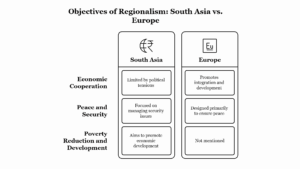

Leave a Reply